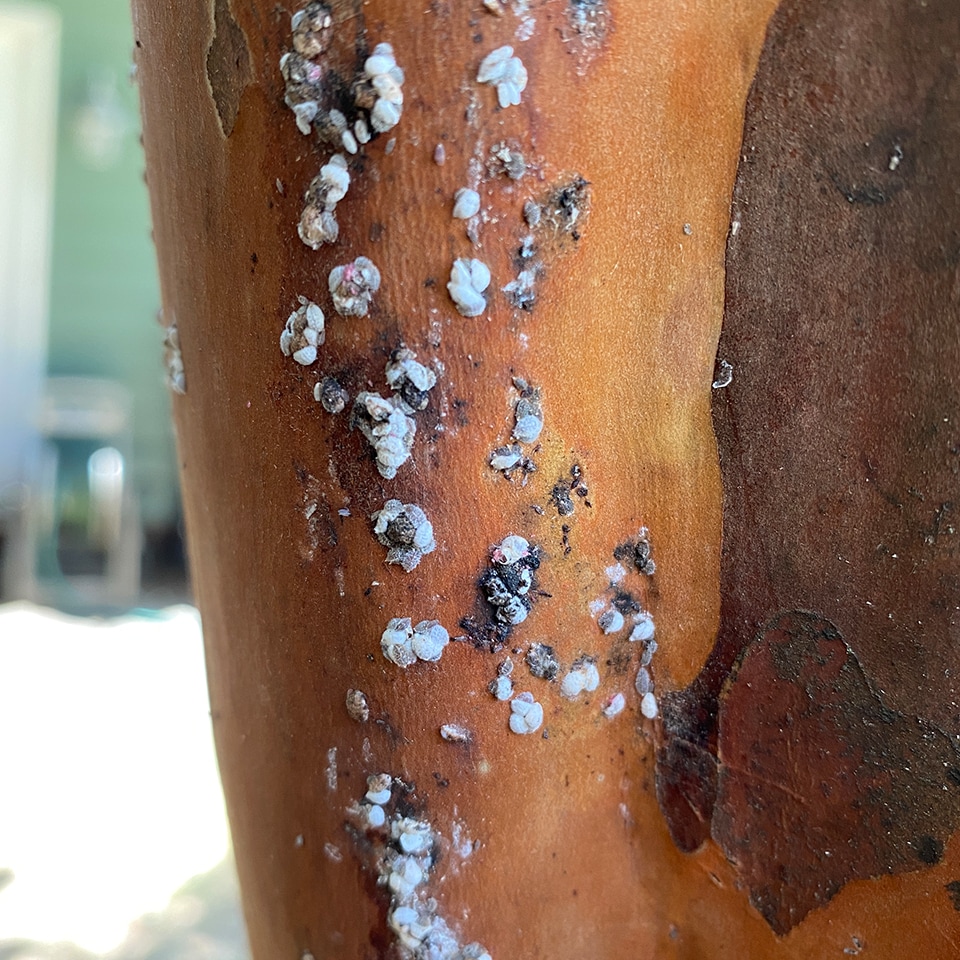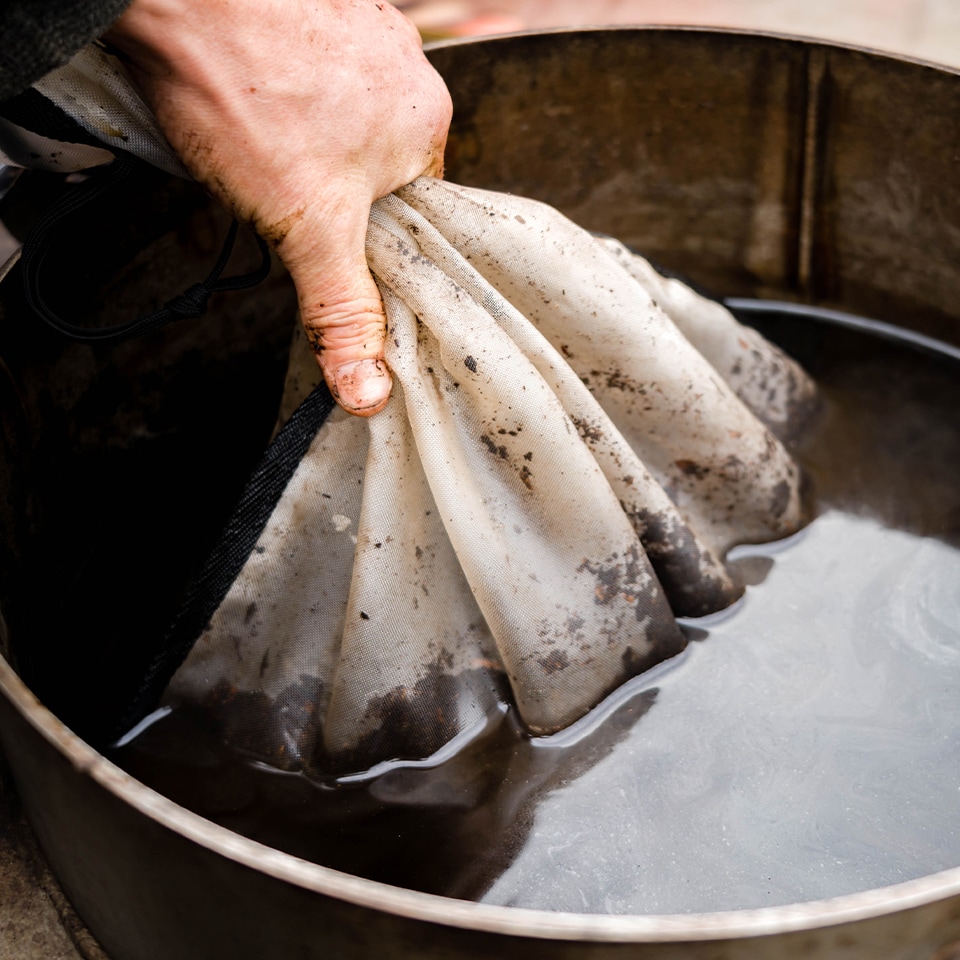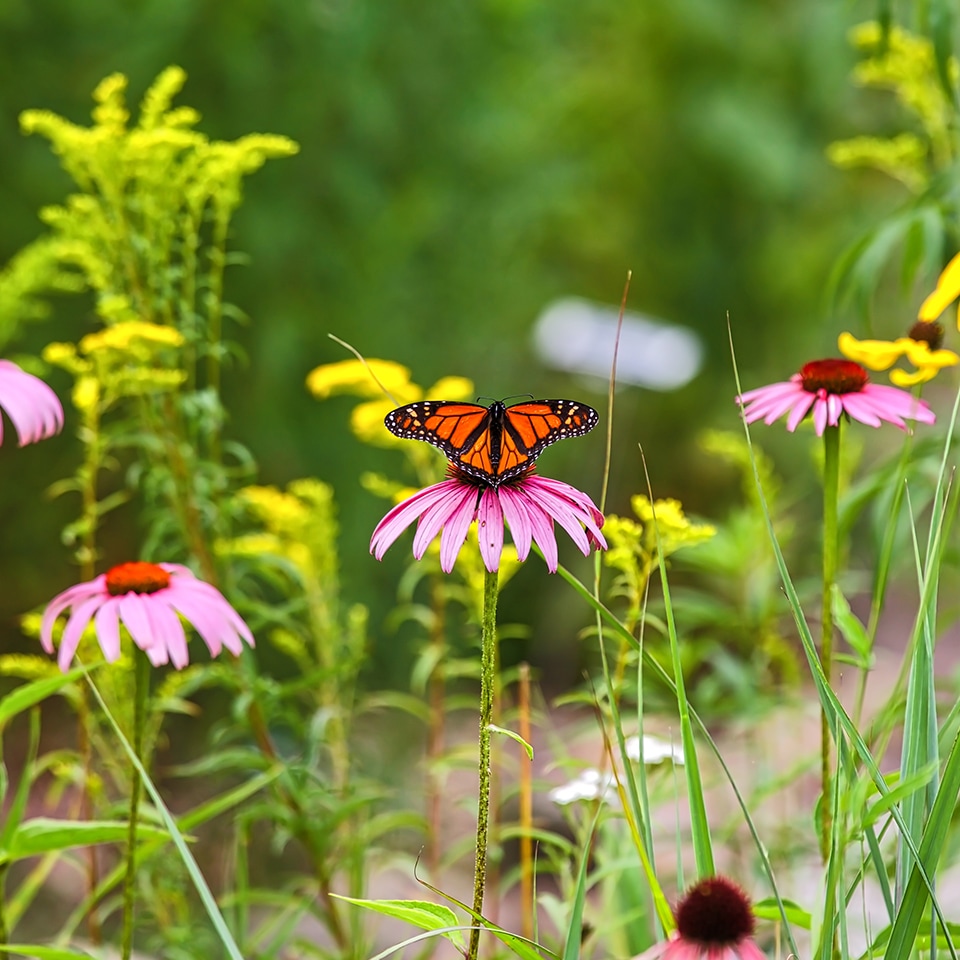June 2023 Treecologist Tribune
Cool Weather = Calm Plants
When the temperature reached 85 degrees on February 23, everyone here at Leaf & Limb groaned. Another hot, droughty spring means more stress for trees that have been suffering through many previous stressful growing seasons. Happily, May has been absolutely ideal! So far, we have received close to 3” of rain distributed throughout the month, and our average temperature was a full 4 degrees Fahrenheit cooler than last year. For plants, cooler weather means less water loss which means less stress, fewer health issues, and a greater ability to defend against pests. This is a great way to enter the hot summer months.
While more rain and cooler temperatures might mean healthier plants better able to defend against pests, there is one nasty bugger to watch for: Crape Myrtle Scale. We first found Crape Myrtle Scale in the Triangle in August 2021. Seeing the incredible pace at which this pest has spread has been remarkable. It’s a nasty bugger and not easy to get rid of without using some very harmful chemicals – and even then, it’s not easy. Fans of the Crape Myrtle will not like to read what I write next: We recommend removing crape myrtles when they become infected. Crape Myrtles are non-native and thus do little to support local non-human life. Replacing them with native species that provide food and shelter for our local insects, birds, and other friends is a significant upgrade for our local ecosystem. My favorite native replacement option is the Native Fringetree (Chionanthus virginicus).

Photo of Crape Myrtle Scale
Even if ecology isn't your primary concern, this is the most cost-effective solution when you start factoring in the future costs of paying a tree care provider to spray your Crape Myrtles yearly. Yes, we could suggest a treatment plan of never-ending treatments, but the truth is that these treatments are not good for the overall well-being of our local ecosystem. Better to do the right thing: replace your Crape Myrtles, and save a bit of money in the process.
Replace Crape Myrtles with native species. Check. What else should we be thinking about right now? We know the iconic dog days of summer in NC are just around the corner. Consider doing the following:
- Add a layer of leaf mold (old rotting leaves) and arborist wood chips around your trees and shrubs. This helps retain moisture during hot days. They also help create rich soil.
- Give your plants some compost tea, a liquid superfood that is the best “fertilizer” there is. Grab some of your lovely compost and steep it in water for 5 minutes, then pour that solution around your plants. I recommend approximately 3 cups of compost per 1 gallon of water.
- Plant companions plants under your trees. Load the area under your trees with native shrubs and flowers. Plants grow better together – this is an easy way to boost the health of your trees. This also provides more ways for insects and birds to thrive.
- Get rid of your grass! Replace it with native flowers and grasses. This is an excellent time to sow native seeds and create a meadow (or Piedmont Prairie, as we like to call it). This will save lots of money, resources, and time over the coming years.

Photo of compost tea

Photo of a Piedmont Prairie
We can help you with any and all of these recommendations – these are all services we offer. Schedule a free consultation with one of our Treecologists today!
Well, my friends, another month has come and gone! Time marches on. I hope you can find a few moments in June to be present and enjoy the beauty that surrounds us daily. I like to do this by getting outside for walks and hikes. If you are looking for a local hike, Triangle Land Conservancy has a series of gorgeous trails at its various nature preserves where beauty abounds. I hope to see you out there!